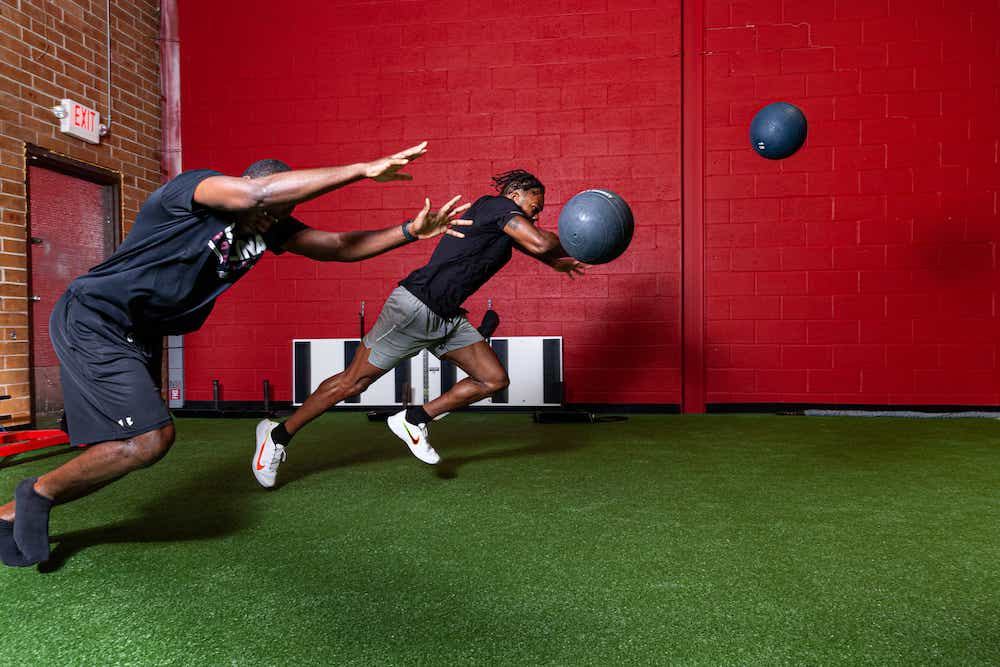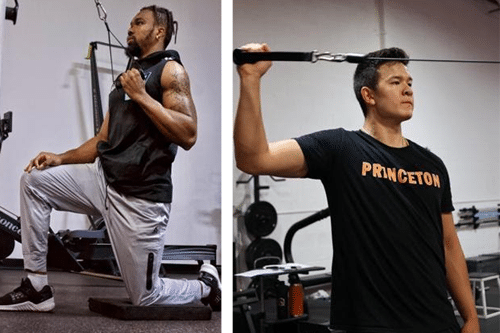Unlock the Benefits of Neck Training: Improve Your Posture, Increase Strength, and Reduce Injury Risk

Training the muscles of the neck is often neglected. Let’s not forget our neck is located between the brain and the rest of the body. This is one of the most important junctions of our bodies, so it’s a must that we train it. Strengthening the muscles of the neck has many benefits such as:
- Improves signals from the brain to body
- Improves breathing
- Improves posture
- Improves balance and coordination
- Helps prevent injuries
- Helps reduce neck and back pain
- Helps release tension and stiffness
- Any training regimen can help lead to improved mental health
We live in a world now where our posture is compromised by everyday living. Slouching when sitting, phone usage, improper sleeping, stress, aging, etc. having a strong neck will eliminate a lot of the average everyday aches and pains. As athletes, strong necks are vital to your performance especially if you play a contact sport. A neck that is stronger, thicker, or aligned in a neutral posture can reduce the amount of energy transferred to the brain during an impact, thus reducing the risk and severity of concussions/injuries. Having a stronger neck can benefit everyone overall.
Tips on training the neck
Train the neck in all the different movement patterns; flexion, extension, and rotation. Make sure to focus on these movements with slower reps and add pauses or isometric holds in the end ranges of motion. How we load the movements varies in many ways. The most common would be banded or adding weight to a neck harness. You can also train the neck indirectly just by making sure you practice good posture while exercising or going through everyday life. Good posture consists of pulling shoulders back while keeping a neutral head and neck position, where the ears sit directly on top of the shoulders. Neck training should never be neglected and should be trained in some form listed above. If you have any questions or are interested in improving neck strength please contact us.

Who can benefit from neck training?
Neck training can be beneficial for a wide variety of people, from athletes to everyday individuals. Athletes, such as football players, boxers, wrestlers, and martial artists, can benefit from neck training as it can help to improve their performance in their respective sports. Neck strength is important for these athletes as it can help to protect them from neck injuries, such as whiplash, which can occur during contact sports.
WHo should avoid neck training?
***You should always consult your medical doctor about any new training you start or stop. We are not doctors.***
Neck training should be avoided by anyone who has a history of neck pain, injury, or instability. This includes people with cervical spine arthritis, degenerative disc disease, or any other chronic neck condition. It is also important to avoid neck training if you have recently had a neck injury or surgery, as the muscles and ligaments may still be healing.
In addition, anyone with a history of migraines, vertigo, or other neurological conditions should avoid neck training.
What are the best exercises for neck training?
The best exercises for neck training depend on your individual goals. Generally speaking, exercises that target the muscles of the neck, such as the trapezius, sternocleidomastoid, and scalene muscles, are the best for neck training.
Trapezius Exercises: Trapezius exercises are great for strengthening the muscles of the neck and upper back. These exercises can be done with weights, resistance bands, or bodyweight.
WHAT ARE THE MOST EFFECTIVE NECK TRAINING methods?
The most effective neck training methods depend on your goals. If you are looking to increase strength and size, then the best exercises are those that involve resistance, such as weighted neck bridges, neck curls, and neck extensions. If you are looking to improve posture and reduce neck pain, then exercises that focus on stretching and mobility are the best option.
A great option is the neck bridge. You lay on your back with knees up and then you lift your hips. Next, you’ll want to balance your weight on your toes and the top of your head. You’ll hold this position so that your back and shoulders don’t touch the ground.
How often should i train my neck?
The answer to this question depends on a few factors, including your current fitness level, the type of neck exercises you are doing, and your goals.
If you are a beginner to neck training, it is important to start slow and gradually increase the intensity and frequency of your workouts. You should aim to train your neck at least twice a week, with a minimum of 48 hours of rest in between sessions. As always, it is a good idea to consult your health professional on this as well.

what are the most common mistakes people make when training their necks?
- Not warming up before exercise: It is important to warm up your neck muscles before doing any exercise. This can help prevent injury and also help you get the most out of your workout. Warming up can be done by doing some gentle neck stretches or by doing some light aerobic activity.
- Not using proper form: When doing neck exercises, it is important to use proper form.
conclusion
In conclusion, neck training is an important aspect of overall physical health and well-being that should not be neglected. It has numerous benefits such as improving signals from the brain to the body, improving breathing and posture, helping to prevent injuries and reduce neck and back pain, and releasing tension and stiffness. Athletes, especially those in contact sports, can especially benefit from neck training in order to protect themselves from neck injuries. However, neck training should be avoided by those with a history of neck pain, injury, or instability, or those with migraines, vertigo, or other neurological conditions. The best exercises for neck training depend on individual goals, and can include trapezius exercises, neck bridges, neck curls, neck extensions, and stretches and mobility exercises. It is important to always consult with a medical professional before starting any new training regimen.

Jermaine Hough
-B.S. Exercise science
-Minor in nutrition
-BPS Level 1


